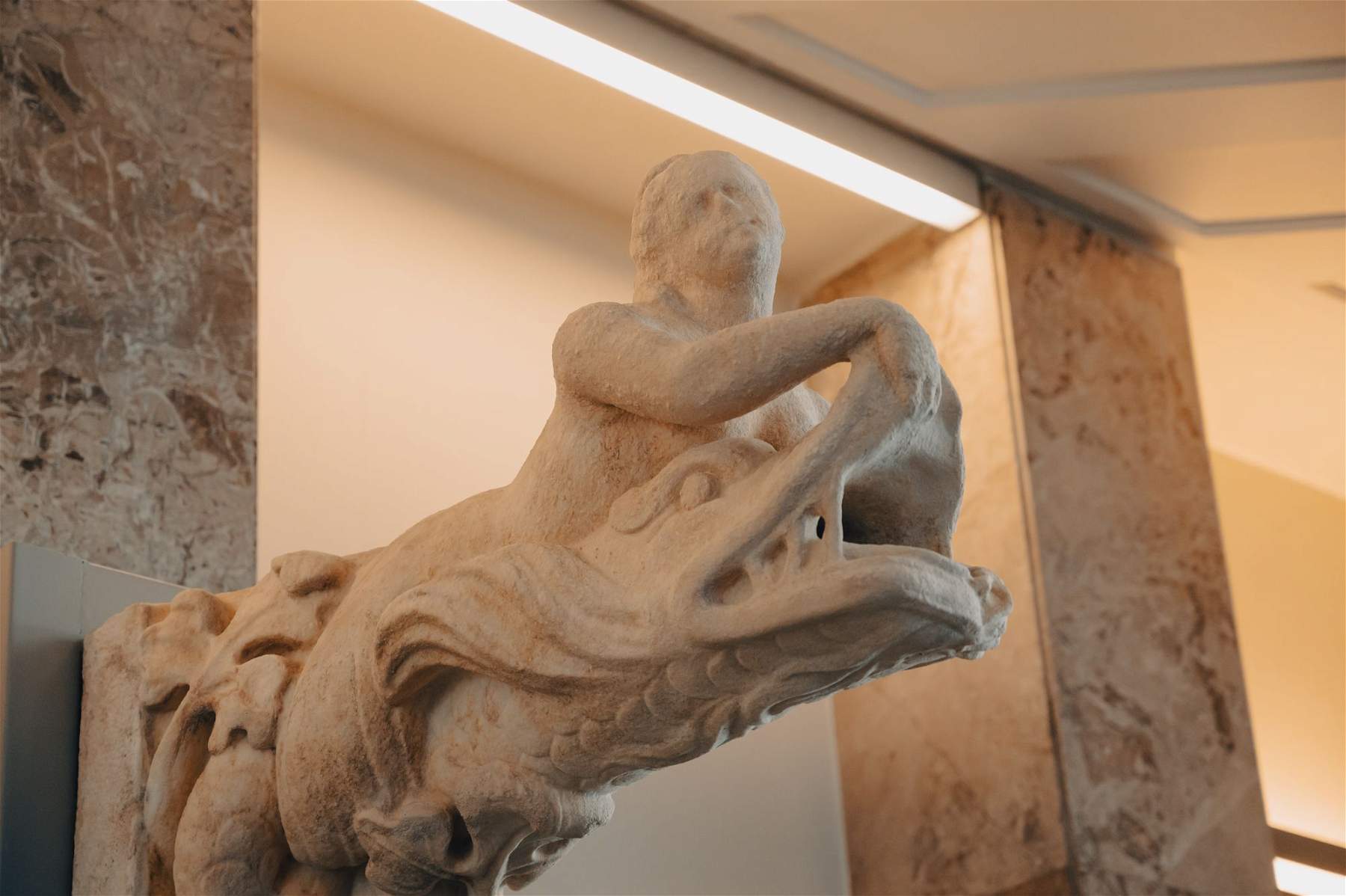Milan, Duomo siren gargoyle displayed at A2A headquarters
A fascinating gargoyle depicting a mermaid riding a sea monster from the 18th century, fully restored, will remain on display in Milan for one year (with the possibility of extension) at the Corso di Porta Vittoria headquarters of A2A, the “Life Company” that deals with the environment, water and energy. Thus, the A2A Group joins the Adopt a Statue initiative, promoted by the Veneranda Fabbrica del Duomo di Milano, the historic nonprofit entity in charge of the construction and enhancement of Milan’s Cathedral Church, created to finance the restoration work on the Cathedral.
The Adopt a Statue project involves the adoption of selected sculptures that, for conservation reasons, can no longer be left in place on the Cathedral of Milan, and for this reason are deposited at the Cantiere Marmisti, the workshop on the outskirts of the city where new sculptures destined for the Monument are created and the more fragile ones find shelter. A2A’s support was earmarked for the restoration of a fascinating gargoyle depicting a Mermaid riding a sea monster from the 18th century. The Siren greets people as they pass through the main lobby of A2A’s Milan headquarters building on Corso di Porta Vittoria, just as the countless statues in Milan Cathedral have always done: they silently observe and watch over the many worshippers, citizens and visitors who walk in the Cathedral’s shadow every day.
The Siren on Horseback
The sculpture adopted by A2A, measuring 107 x 65 x 35 cm, was made in 1747 by sculptor Pietro Vaccaneo and placed at the base of the G4 corner spire, dedicated to St. Macrobius, on the southeast side of the Cathedral. An ancient document in the Archives of the Veneranda Fabbrica refers to a gargoyle placed toward the Archbishopric: “[...] representing a serpent around which there is a mermaid who with her hands holds open the mouth of said serpent [...].” Removed from the cathedral for conservation reasons, the original statue was replaced in 2014 by a copy made by sculptor Nicola Gagliardi.
The Adopt-a-Statue Project
The sculptures bear witness to and tell the story of the Cathedral and its entanglements with the territory, “whispering in the ear of those who contemplate them ancient and secret stories,” as suggested by the prose of the Romantic poet and writer Heinrich Heine, who was thunderstruck by the forest of more than 3,400 statues that populate the Cathedral. From this premise was born Adopt a Statue, an initiative of the Veneranda Fabbrica that, also thanks to the collaboration with the Soprintendenza Archeologia, belle arti e paesaggio for the metropolitan city of Milan, has as its main objective the recovery of these historical pieces, offering them to companies and individuals on temporary loan, against a contribution aimed at the restoration of the Cathedral.
What is a gargoyle?
The term gargoyle denotes typical elements of Gothic architecture, characterized by a function that is not only ornamental but also structural. Indeed, gargoyles are drainage channels with animal, demonic, anthropomorphic or fanciful appearances aimed at collecting rainwater so that it does not drain freely from the roof, damaging the Cathedral’s marble walls. Also known by the French term Gargoyles, gargoyles thus originated as water spouts and in the Gothic tradition took on apotropaic forms, figures animated by endless artistic motifs. The main function of conveying rainwater led many Milan Cathedral sculptors to prefer subjects and themes from the aquatic world for the Gargoyles, exactly as in the case of Siren riding sea monster.
 |
| Milan, Duomo siren gargoyle displayed at A2A headquarters |
Warning: the translation into English of the original Italian article was created using automatic tools. We undertake to review all articles, but we do not guarantee the total absence of inaccuracies in the translation due to the program. You can find the original by clicking on the ITA button. If you find any mistake,please contact us.





























